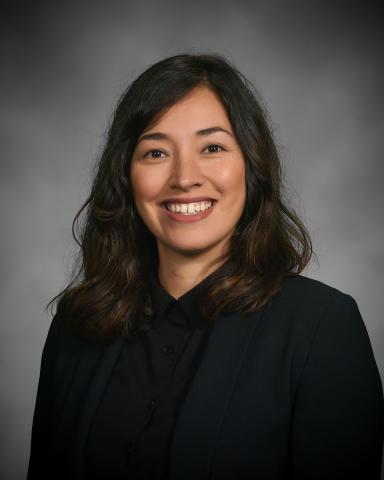Dr. Ana Dueñas: Helping Children with Autism “Learn to Learn”

Looking back, Dr. Ana Dueñas can admit she had a lot to learn about autism spectrum disorder when she first began working with children with autism autistic students.
She was working in an afterschool program for students with autism and their siblings, with the goal of getting them to interact socially.
"Being very naïve, and knowing very little about autism at the time, I thought how cool it was that they cared more about ants crawling than with really playing with each other,” recalls Dueñas, an assistant professor with Lehigh’s special education program.
That was before she knew the research about the importance of socialization for children with autism spectrum disorder.
Without it, Dueñas notes, they struggle to integrate in educational settings and with finding and keeping jobs later in life.
“They spend a lot of time at home when they may have really incredible skills and the ability to connect with others, but they need a lot of support,” she says. “But at that time, I romanticized a lot of things about the disorder and thought ‘Why are we doing this, why are we forcing them?’ It wasn’t until a lot later in my career that I understood that, and it became a very high focus for me.”
Dueñas comes to Lehigh following seven years of investigating ways to improve social communication outcomes for people with autism spectrum disorder (ASD) and related developmental disorder.
She’s also interested in applying technology to broaden accessibility to services for people with ASD and their loved ones.
To that end, Dueñas has done a lot of work recently on video modeling as a method for helping children with ASD with socialization. It’s an effective method, she says, for “teaching kids to learn to learn.”
Video modeling is what it sounds like. An instructor will show a student a video of a person (the model) performing a task or behavior they want the student to develop.
“When we just select the social skills to teach...it's quite tricky, because we may not know the context, or what's age appropriate, or what's typical,” Dueñas says.
For most of us, we learn to socialize by watching others. The things that lead to positive effects, we tend to imitate. The things that lead to negative effects, we tend to avoid.
Much of Dueñas’ work has involved naturalistic behavioral interventions, which involves applying same principals of applied behavioral analysis in a way that's more natural and contextually appropriate.
“What we’ve learned is that if we teach a certain way – and it doesn’t matter if it’s a child with autism or not – they will perform what we teach them in the exact same way,” she says.
For Dueñas, the “a-ha!” moment that illustrates this point came while working with a three-year-old Iranian girl with autism, teaching her to label items.
It's something all parents might do with their children as they learn to talk. Point to a picture of a zebra, the child will say “Zebra,” and the mom or dad will praise them for being correct.
“So that’s a language deficit for children with autism and it’s important for socializing,” Dueñas says. “It’s how we invite someone else to our experiences.”
She sat across from the girl, showing her picture cards, giving her praise when she correctly identified objects, correcting her when she got one wrong.
Dueñas was interested to see if the girl could label items that she had taught her in a more natural way. They took the girl to another room and spread out the items around the room.
But instead of labeling items, the girl seemed upset and confused. After a while, she grabbed a toybox, turned it over, and essentially made it into a table. The girl sat on the side of the “table,” labeling objects, just as she had in the initial lesson.
"What I realized is "Wow, If the context is not in the same way that we teach these things, then they might not perform the way we want them to perform, and so why are we teaching it that way. It makes no sense.”
Dueñas, who has a PhD in special education from Michigan State University, says she chose Lehigh in part because of the university’s close collaboration with local school districts.
"That's where I'd like to take the work I've done. I think schools is where a lot of these interventions need to be applied,” she says. “The huge question is ‘How do we make that work?’”
As the interview winds down, there’s one more, wrapping-things-up question for Dueñas: do you have anything else you want to add?
She thinks for a moment, then notes that her parents emigrated here from Mexico. She’s the first in her family to graduate from high school, let alone earn a PhD.
“I feel very lucky,” she says. “It’s a significant accomplishment for my family.”
Now, she hopes to help other families achieve accomplishments of their own